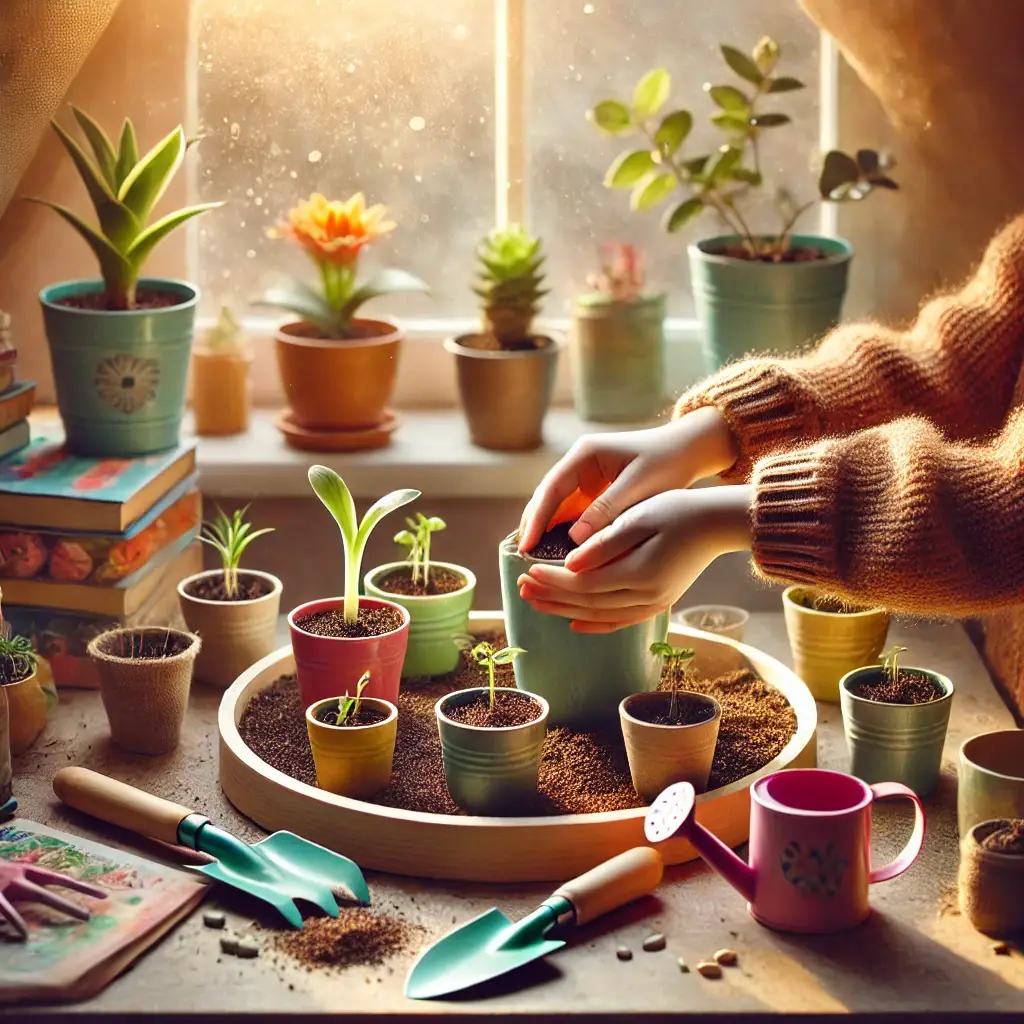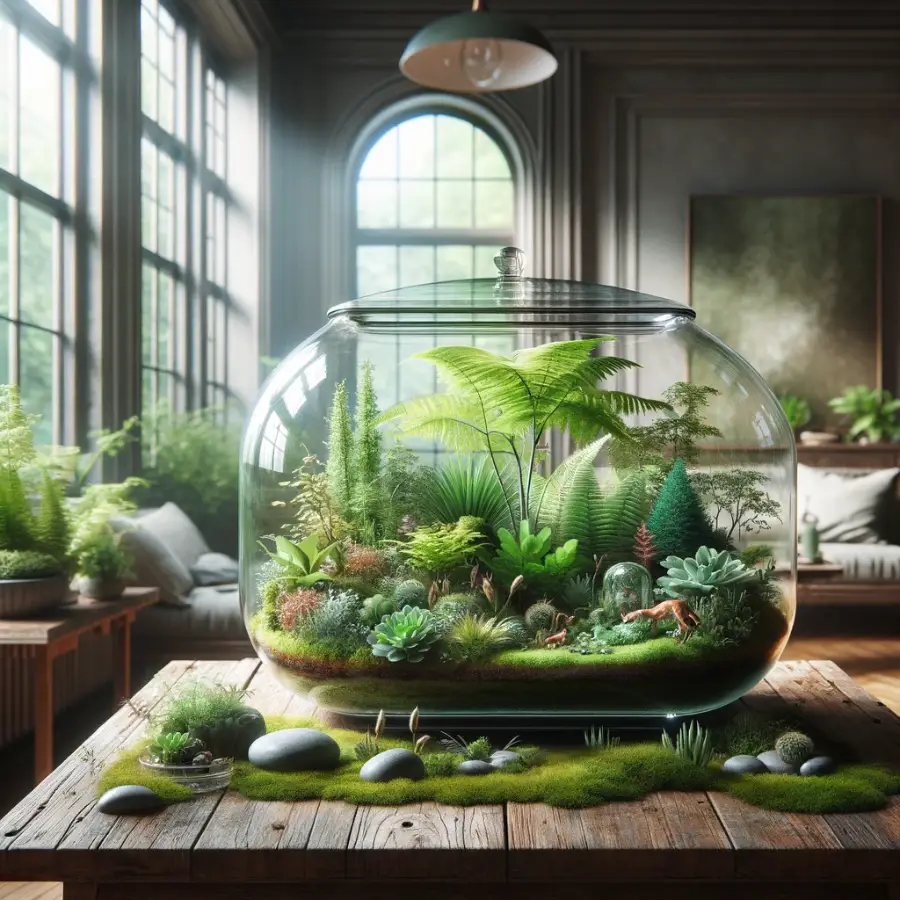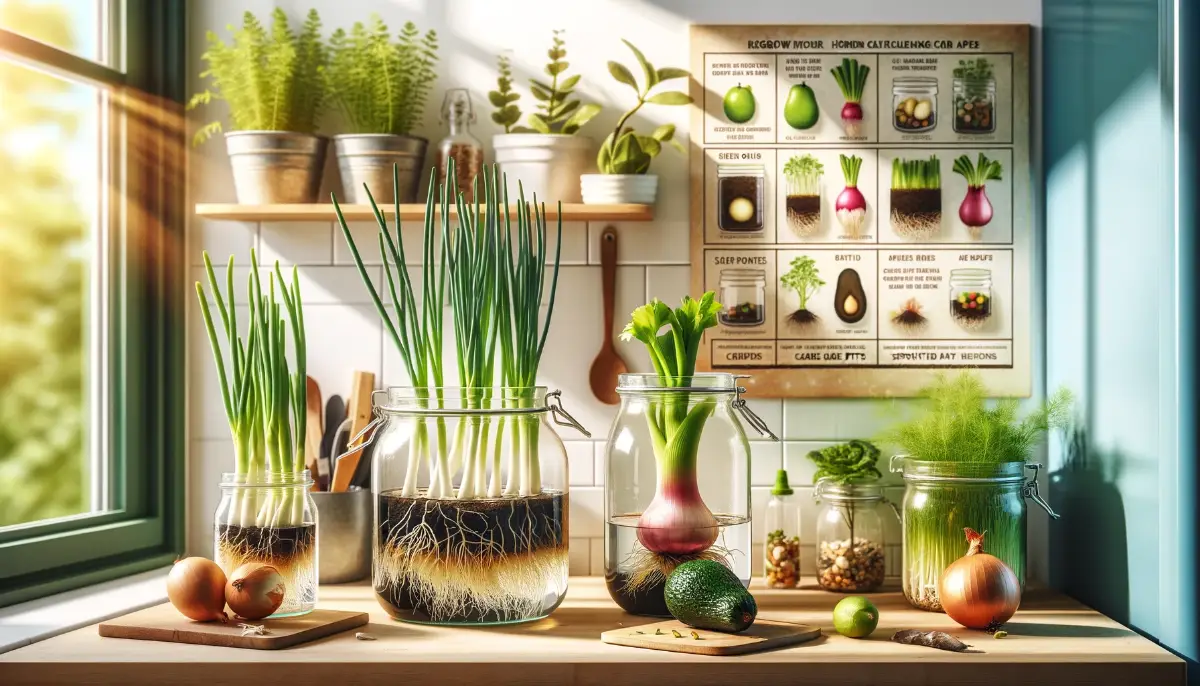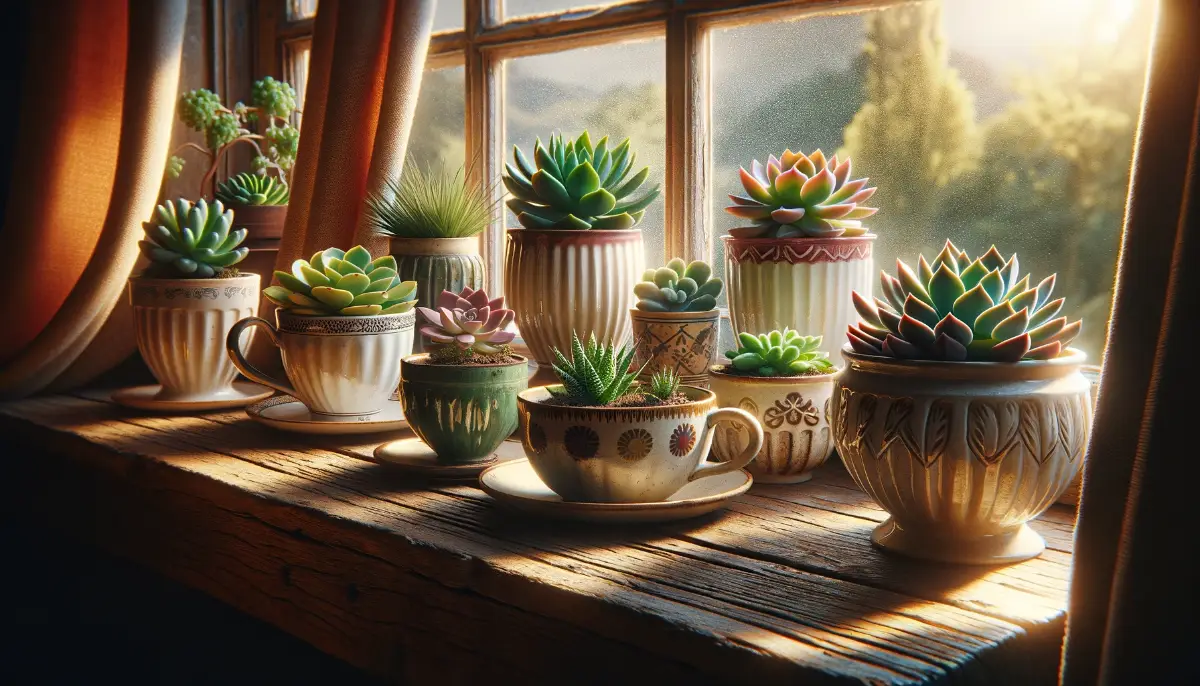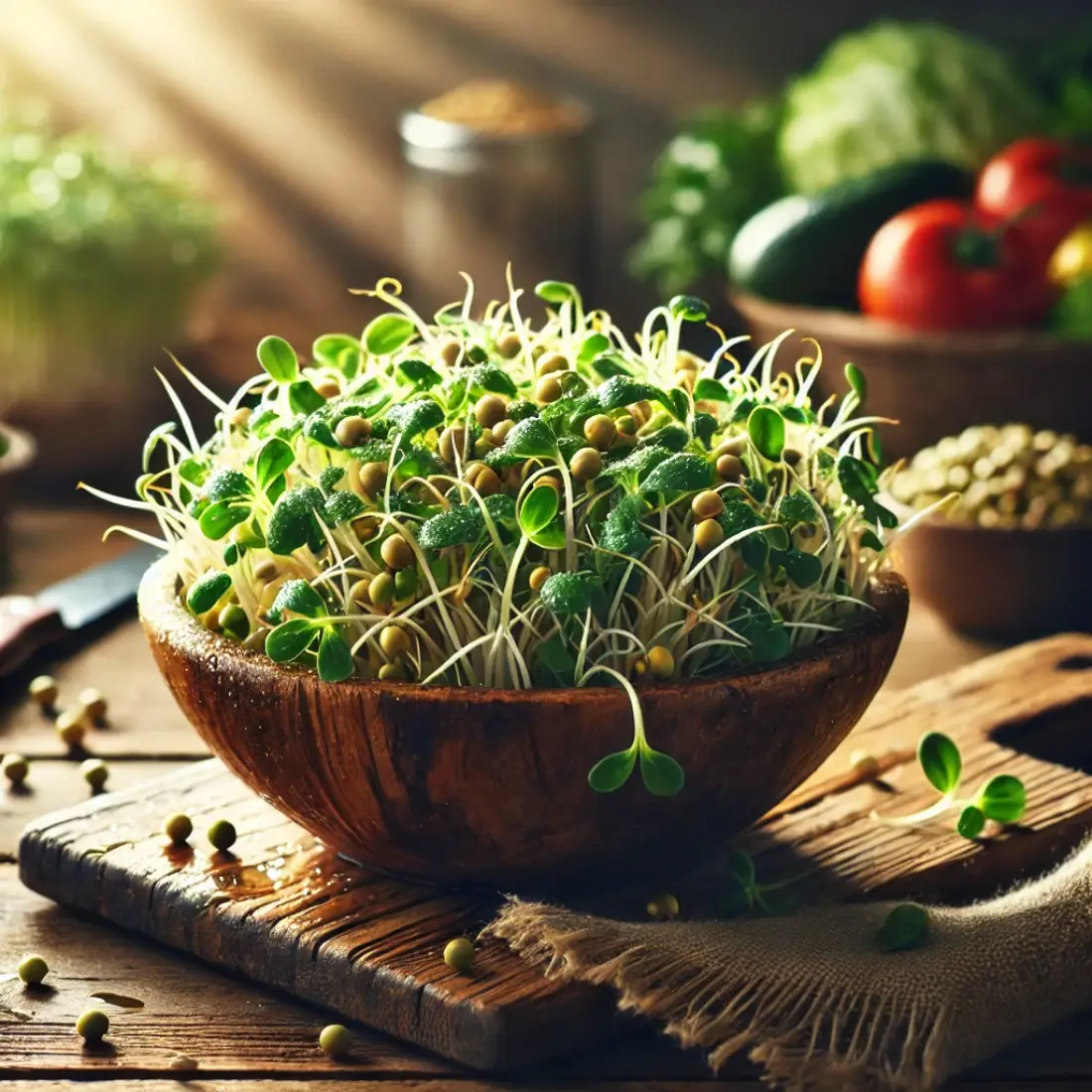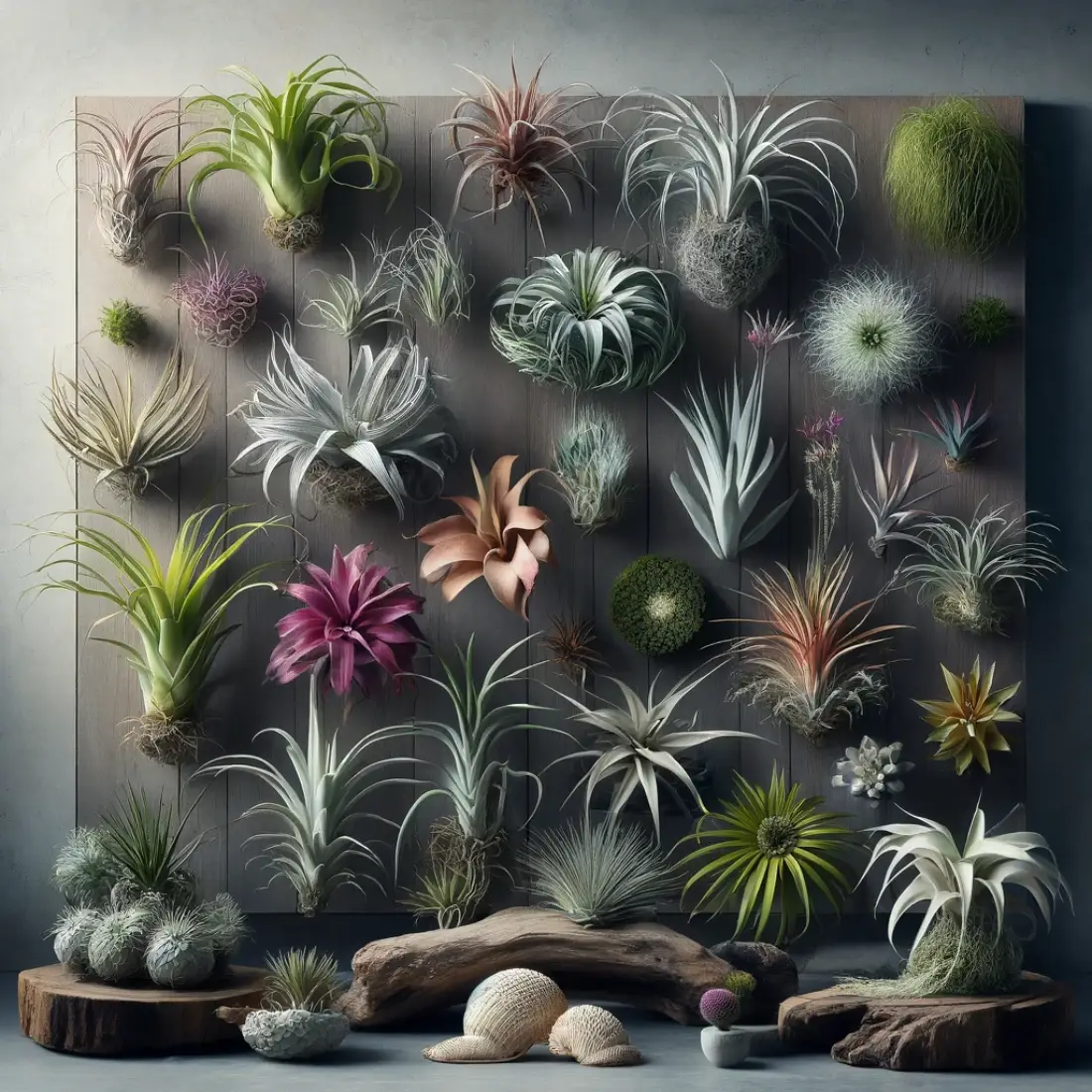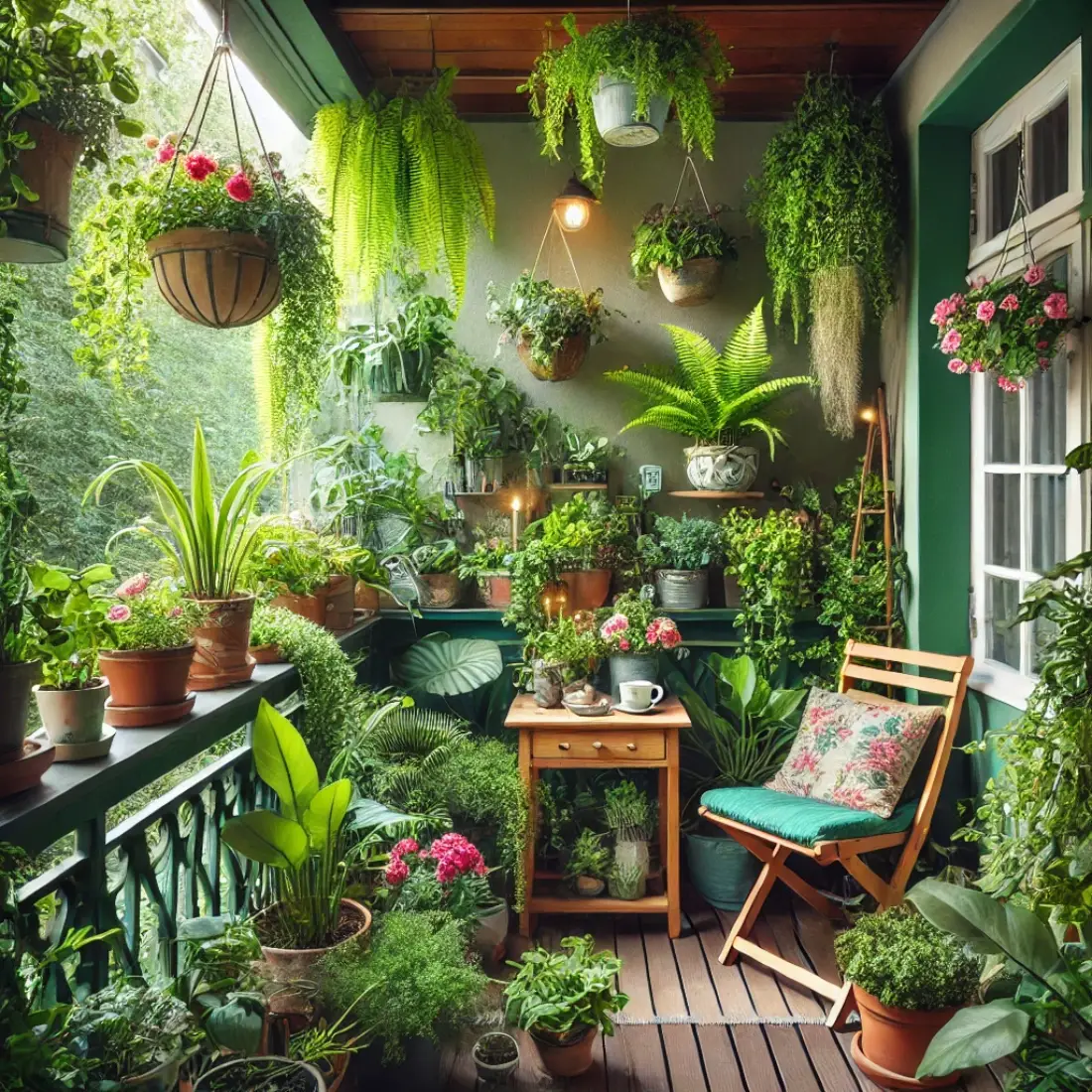Gardening can be a magical experience, especially for children. When kids plant their first seeds, watch their own flowers bloom, or pick herbs from their own tiny garden, they learn invaluable lessons about responsibility, patience, and the wonders of nature.
Bringing gardening indoors makes it possible year-round, and these projects are designed to be fun and accessible. Each one will introduce kids to the basics of plant care while letting them explore, create, and take pride in growing something of their own.
- Indoor gardening can spark a lifelong interest in nature and responsibility.
- Kids love projects with visible, quick results, such as growing herbs, making terrariums, and regrowing veggies.
- Easy, hands-on projects with everyday supplies allow kids to learn in a playful way.
Easy and Fun Indoor Garden Projects for Kids
1. Start a Windowsill Herb Garden
Creating a windowsill herb garden is a wonderful beginner project. Herbs like basil, mint, and parsley grow well indoors and offer kids the chance to see quick results. Not to mention, you’ll have fresh herbs ready for cooking!
Here’s How:
- Gather Supplies: All you need are small pots, potting soil, and herb seeds.
- Get Planting: Help your child fill each pot with soil and sprinkle in a few seeds. Gently press the soil down, water lightly, and place the pots on a sunny windowsill.
- Personalize It: Kids love decorating! Encourage them to paint or label their pots with their names, herb type, or even little drawings.
This project teaches kids about plant care, responsibility, and lets them watch their plants grow from tiny seeds into fragrant herbs. Plus, they can use their homegrown basil on a pizza night!
2. DIY Eggshell Seed Starters

Eggshells are surprisingly great for gardening, and this project is especially fun for little ones. Eggshell seed starters are biodegradable, simple, and can be planted directly into soil when the plants are ready.
Here’s How:
- Get Supplies: You’ll need empty eggshell halves, soil, and seeds (try lettuce or flowers).
- Planting: Gently fill the eggshells with soil, drop in a few seeds, and place the shells in a tray or egg carton.
- Decoration and Care: Let kids paint the eggshells, set them on a sunny windowsill, and lightly water as needed.
Not only is this project environmentally friendly, but it also teaches kids about repurposing and the idea of biodegradability. Watching the tiny sprouts emerge gives them a sense of accomplishment and wonder.
3. Make a Miniature Terrarium
For kids with a love for creating tiny worlds, making a miniature terrarium can be an enchanting indoor garden project. Terrariums are low-maintenance, closed environments that don’t need much water, and they can even teach kids about ecosystems.
Here’s How:
- Materials: Gather a glass jar, small stones or pebbles, potting soil, and small plants or moss.
- Build Layers: Start with a layer of pebbles for drainage, followed by soil. Let kids plant their small plants or moss on top.
- Add Decorations: Encourage your child to add tiny figurines, stones, or any other decor to personalize their terrarium.
A terrarium is a small, closed world that can give kids insight into the water cycle, showing how plants get water through condensation.
4. Grow Veggies from Kitchen Scraps
This project is a great way to teach kids about sustainability and reusing waste. By regrowing vegetables from kitchen scraps, they can see just how resilient plants are – and it’s an excellent lesson in reducing waste.
Here’s How:
- Choose Veggie Scraps: Start with simple veggies like green onions, celery, or lettuce.
- Set Up: Place the veggie scraps in shallow bowls with water and set them in a sunny spot.
- Observe and Transfer: Once the roots start growing, transfer the scraps to small pots with soil.
Not only does this activity show kids the magic of plant regrowth, but it also gives them the responsibility to nurture something from kitchen waste into a flourishing plant.
5. Indoor Flower Garden with Recycled Containers
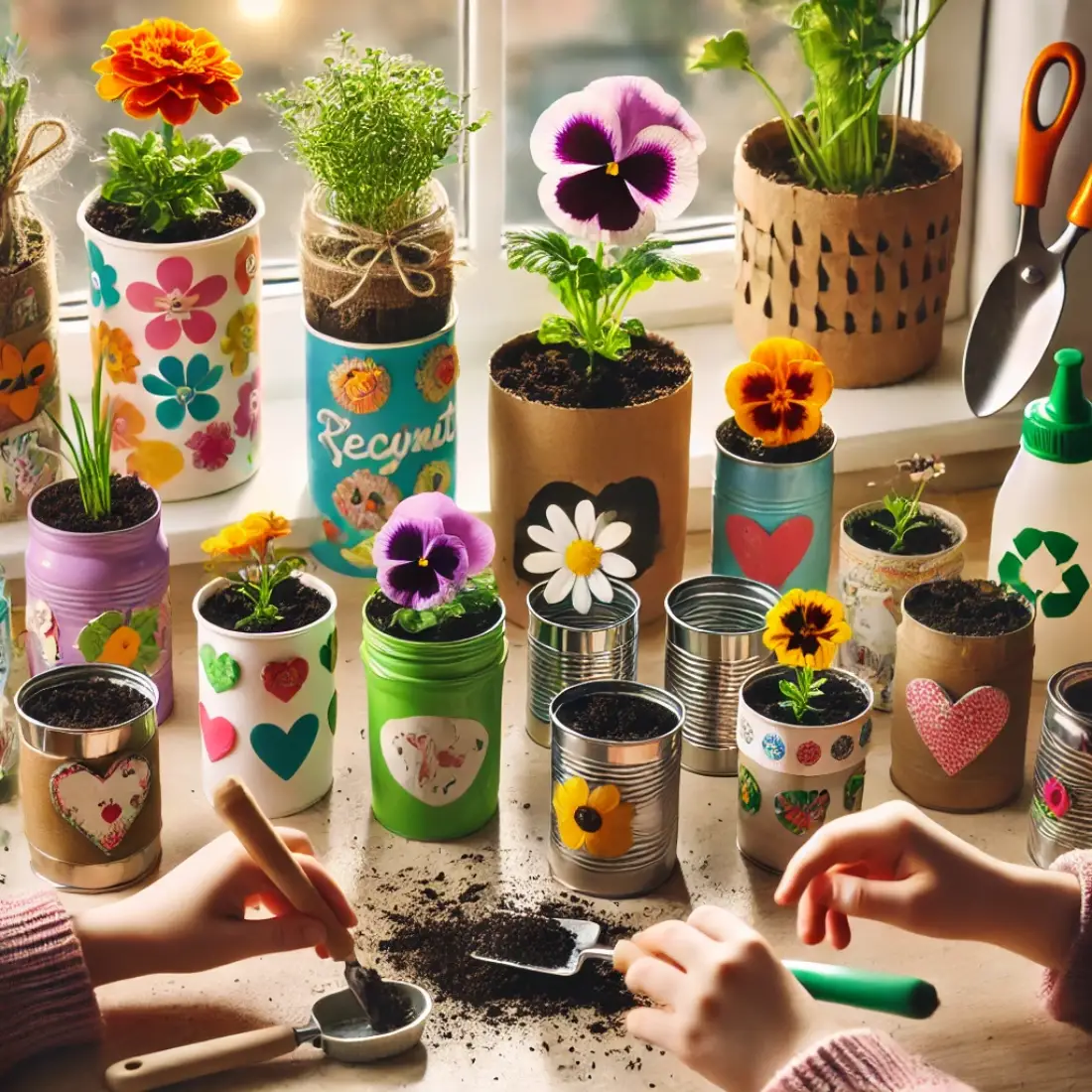
Flowers bring instant beauty to any room, and planting them in recycled containers teaches kids to see the potential in everyday objects. Plus, kids get a chance to nurture colorful blooms.
Here’s How:
- Choose Containers: Recycle yogurt cups, glass jars, or tin cans.
- Pick Flowers: Marigolds, pansies, or sunflowers are great choices.
- Plant and Decorate: Let kids fill containers with soil and seeds, then decorate with stickers or paint.
This project not only teaches children about upcycling but also lets them see the beauty of flowers close-up.
More Advanced Indoor Gardening Ideas for Older Kids
1. Building a Fairy Garden
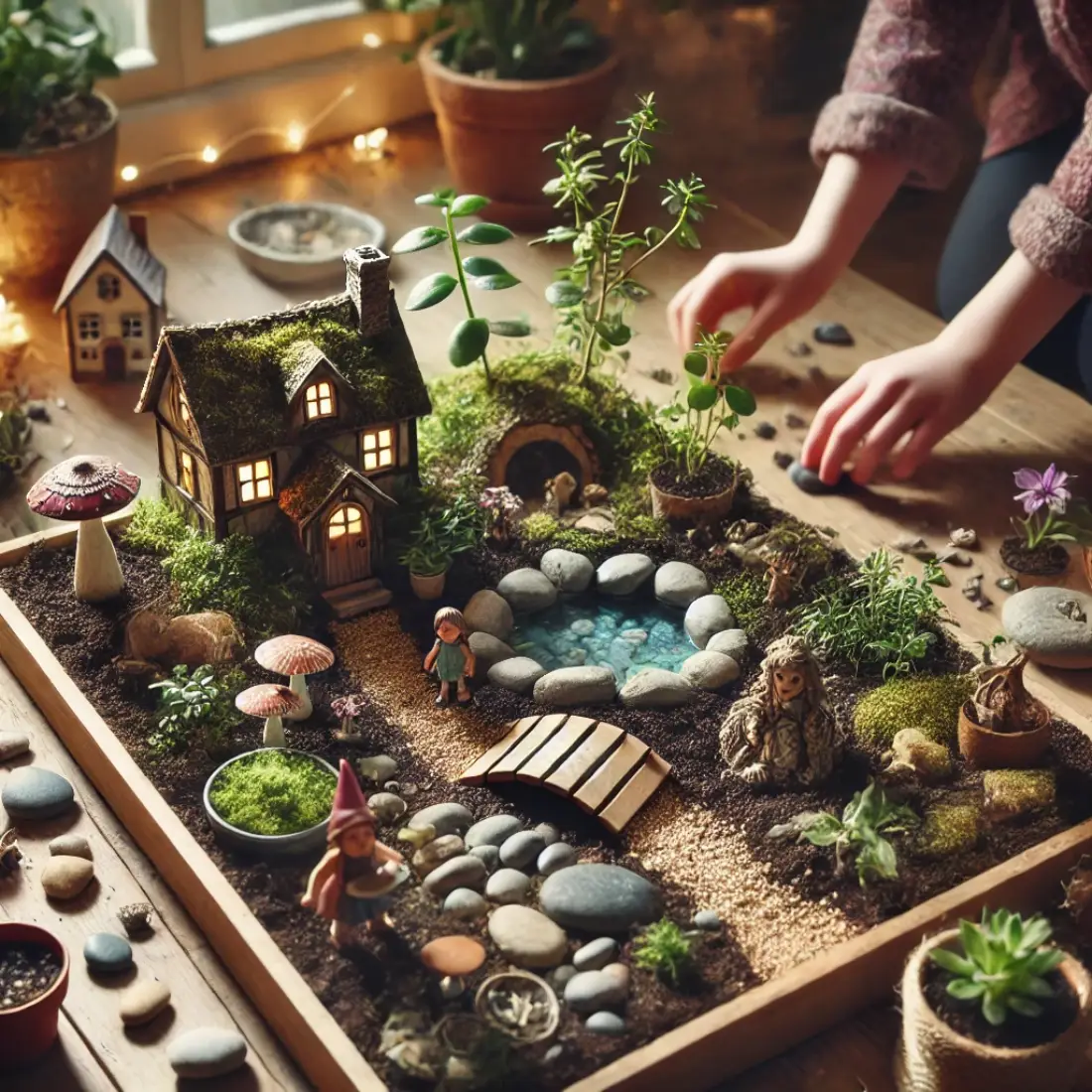
A fairy garden is a creative project where kids can imagine tiny worlds inhabited by fairies, gnomes, or animals. It’s great for encouraging creativity alongside gardening skills.
Here’s How:
- Supplies: A shallow container, soil, small plants, and small figurines or decorations.
- Design the Layout: Let your child design paths, tiny ponds (using small pebbles), and fairy houses.
- Create a Story: Have them create a story about the characters in the garden.
The fairy garden project offers more than just planting, it’s a creative way to encourage storytelling and imaginative play.
2. Succulent Garden Design
Succulents are hardy, beautiful plants that can grow indoors with minimal care, making them ideal for kids who are ready for a bit more responsibility.
Here’s How:
- Materials: Small pots, cactus soil, and a few different succulent cuttings.
- Arrange and Plant: Let kids arrange succulents in patterns or themes.
- Minimal Watering: Teach them about sparingly watering, which helps build patience.
A succulent garden also looks beautiful on display, which can boost your child’s pride in their indoor garden.
3. Sprout House with Mason Jars
Sprouting seeds like alfalfa or mung beans in a mason jar is a unique way for kids to see fast growth and learn about plant nutrition.
Here’s How:
- Supplies: Mason jars, sprouting lids, seeds, and water.
- Soak and Rinse: Soak seeds overnight, then rinse and drain twice daily.
- Watch and Snack: Within a few days, you’ll have sprouts ready to eat!
Sprouting teaches kids about plant life cycles and healthy eating. They’ll feel a sense of accomplishment when they can eat what they grew themselves.
4. Hanging Garden with Air Plants
Air plants, which don’t need soil, offer a unique and visually appealing indoor garden. Plus, they’re ideal for hanging in creative ways, making this project fun for kids who love decorating.
Here’s How:
- Supplies: Air plants, string, hooks, and decorative holders.
- Arrange and Display: Let kids decide how to arrange their air plants, creating a vertical garden.
- Easy Care: Show them how to mist or soak air plants weekly.
A hanging garden can brighten any room, and it teaches kids that plants can grow in surprising ways.
Teaching Kids About Plant Care and Gardening Responsibility
Create a Garden Journal to Track Progress
Keeping a journal encourages kids to observe changes in their plants, take notes, and draw pictures. They can record when they water, how big the plants grow, and what the leaves look like.
Exploring STEM Through Gardening
Gardening offers countless learning opportunities in science, technology, engineering, and math (STEM). For instance:
- Photosynthesis Experiment: Try growing one plant in sunlight and one in darkness to see the difference.
- Water Cycle Observation: Use a terrarium to demonstrate how water recycles within the jar.
These activities bring STEM learning to life and help kids understand how science impacts the world around them.
FAQs about Creative Indoor Garden Projects for Kids
How do you introduce gardening to kids indoors?
Starting with simple, hands-on projects like herb gardens, seed sprouting, or terrariums works best. Let kids get messy and involved from the start, so they feel ownership.
What plants are best for kids’ indoor gardening?
Herbs, succulents, and fast-growing veggies like lettuce or green onions are ideal. These plants grow relatively quickly, making them rewarding for kids to observe.
How do indoor garden projects benefit children?
Indoor gardening promotes patience, responsibility, and curiosity. It’s also a great hands-on way to introduce STEM concepts like biology and sustainability.
What age group are these indoor garden projects suitable for?
Most projects can be adapted for ages 3 and up. Younger kids might need more help, but they can still participate by watering, planting, or observing growth.
Can you grow vegetables indoors with kids?
Absolutely! Herbs, green onions, and lettuce are great indoor vegetables to grow with kids. They’re low-maintenance and grow well with moderate sunlight.

